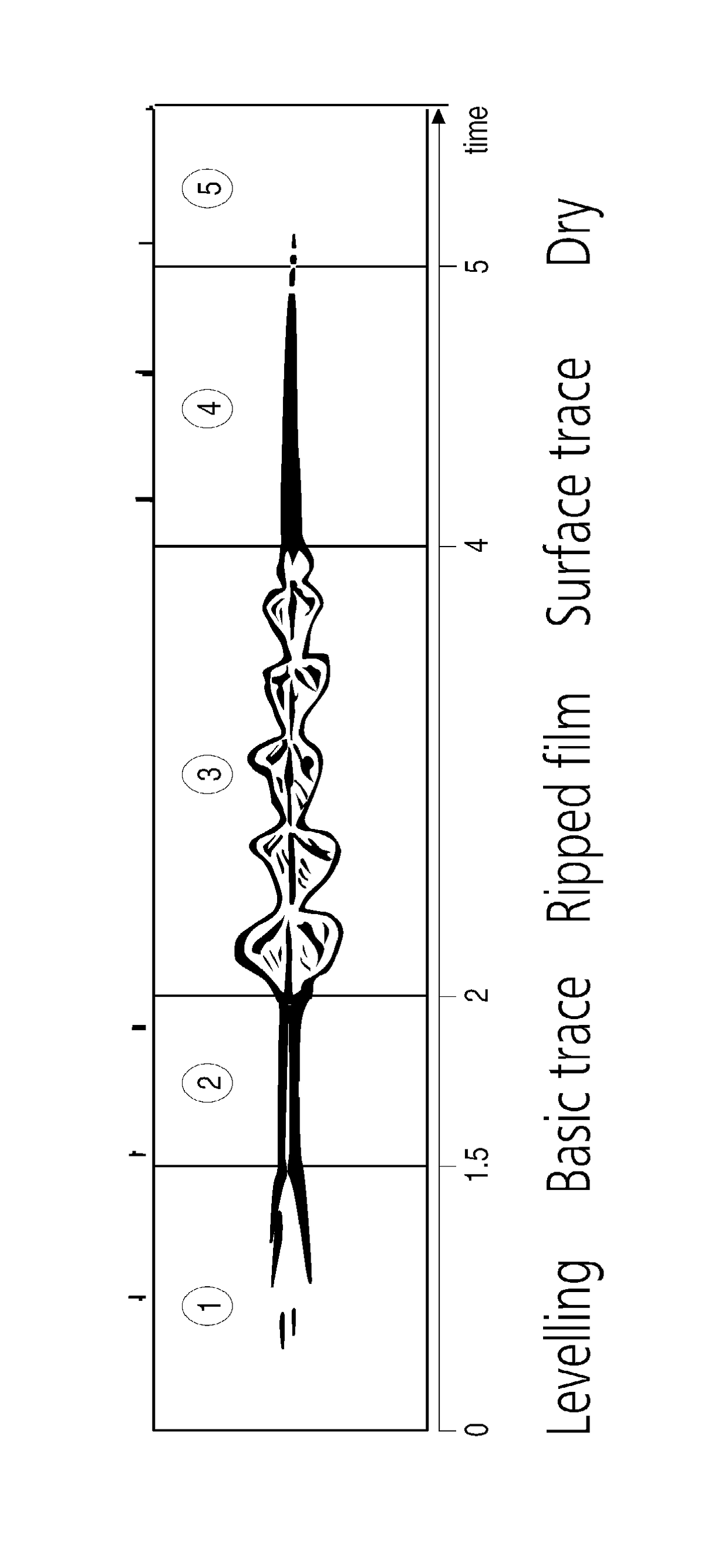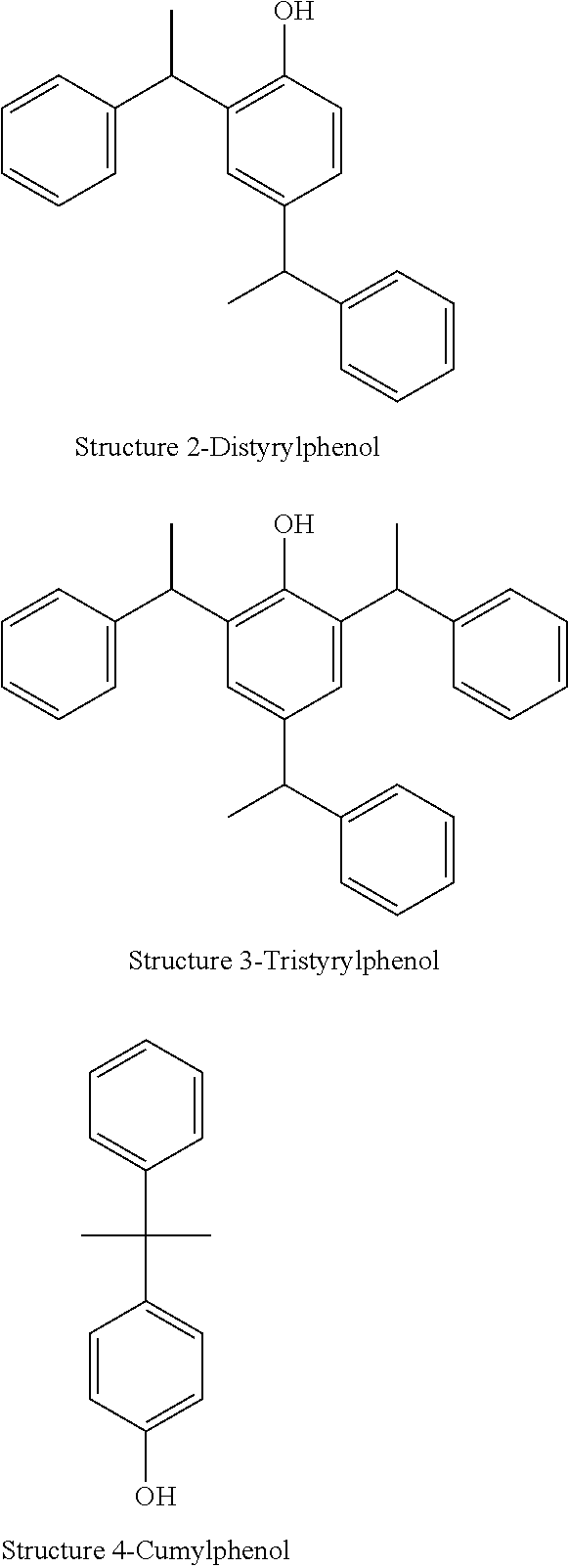Water borne epoxy resin dispersions and epoxy hardener compositions
a technology of epoxy resin and dispersions, which is applied in the direction of adhesives, adhesive types, coatings, etc., can solve the problems of dispersed resins that are not freeze/thaw stable, dispersed resins that are not readily dispersed in water, and poor freeze/thaw stability of dispersions, etc., to reduce or eliminate solvents, reduce or eliminate amine blush, and reduce viscosity
- Summary
- Abstract
- Description
- Claims
- Application Information
AI Technical Summary
Benefits of technology
Problems solved by technology
Method used
Image
Examples
examples
Use of Additives to Reduce Viscosity, Improve Coating Clarity, and Extend the Pot Life to Cure Time Ratio
example i
[0048]A bisphenol A-based liquid epoxy resin from Hexion / Momentive, EPON 828, viscosity 15,300 cps, was used for the epoxy. The additives used in this study are listed in the table 1 below. Note that NP indicates nonyl phenol.
[0049]
TABLE 1PercentAdditiveHydrophobeMoles of EOsolidsBenzyl alcohol———DSPDSP0100DSP 5DSP5100TSP 15 / 7DSP15.7100TSPTSP0100TSP 5TSP5100TSP 10TSP10100NPNP0100NP4NP4100
[0050]The liquid epoxy resin was added to a small paint can followed by the appropriate amount of additive. The mixture was mixed without entraining air with a stainless steel three blade mixer for approximately 15-20 minutes. All reagents were stored and mixed at constant temperature (23° C.).
[0051]Viscosities of epoxy and additive mixtures were determined using a Brookfield RV viscometer, spindle #6, 4 RPM. All viscosities were determined at constant temperature (23° C.).
example ii
Hardener Adduct Preparation for Cure Time Data
[0052]A 4:1 XTA adduct (XTA from Hexion—60-100% 1,3 bis-(aminomethyl)cyclohexane, 13-30% imino-bes(4 amino methyl-4′-cyclohexylmethyl)amine, and 1-3% 3-azabicyclo[3.2.2]nonane was made by adding 400 grams of XTA to a large glass jar. Next, 100 grams of epoxy was added to the jar. A stainless steel two blade stirrer was added to the jar and topped with a lid with a hole that allowed the stirrer shaft to protrude through and rotate freely. The adduct was allowed to stir and react for 8 hours at RT. The final calculated AHEW was 48.6.
PUM
| Property | Measurement | Unit |
|---|---|---|
| weight percent | aaaaa | aaaaa |
| molecular weights | aaaaa | aaaaa |
| temperature | aaaaa | aaaaa |
Abstract
Description
Claims
Application Information
 Login to View More
Login to View More - R&D
- Intellectual Property
- Life Sciences
- Materials
- Tech Scout
- Unparalleled Data Quality
- Higher Quality Content
- 60% Fewer Hallucinations
Browse by: Latest US Patents, China's latest patents, Technical Efficacy Thesaurus, Application Domain, Technology Topic, Popular Technical Reports.
© 2025 PatSnap. All rights reserved.Legal|Privacy policy|Modern Slavery Act Transparency Statement|Sitemap|About US| Contact US: help@patsnap.com



